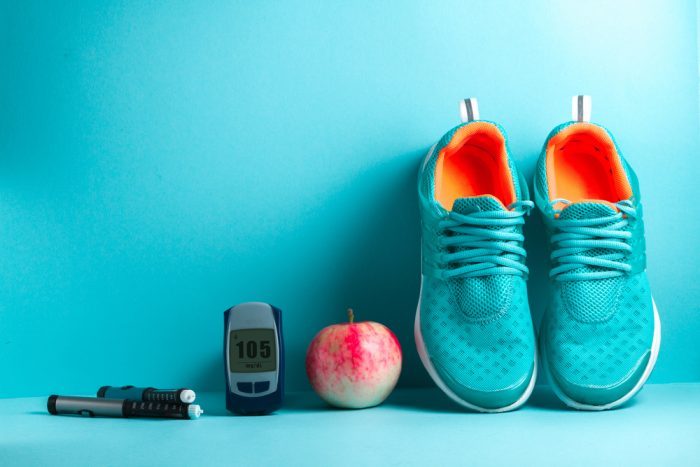Neuropathic pain is common to diabetics and is often treatment-resistant.
Patients with diabetes often suffer from a painful tingling sensation in their limbs. Doctors call this “diabetic peripheral neuropathy” (DPN). DPN is a debilitating condition. Recent research, however, indicates that cannabis-based treatments may offer relief to patients with diabetes leg pain.
DPN Pain in Diabetes
DPN affects around 366 million people worldwide and is a common side effect of diabetes. Around fifty per cent of diabetic patients have DPN, while fifteen per cent report symptoms to be painful.
Peripheral neuropathy is damage to the nerves carrying messages from the brain to the rest of the body. Because of the damage, nerve responses malfunction in the limbs and torso. Pain and increased sensitivity to pain are particularly common symptoms, especially in the feet and legs.
Other symptoms can include sensitivity to touch, numbness, and a tingling or burning sensation. Patients commonly indicate symptoms to be worse at night. Peripheral neuropathy commonly occurs in diabetic patients thanks to the damage done to nerve cells by unmanaged blood sugar levels.

Current DPN Treatments
DPN can be extremely painful and uncomfortable for sufferers and so effective treatments are crucial to maintaining the health and quality of life for diabetic patients. There are two DPN medications with FDA approval. However, patients often report unsatisfactory results from these. Ultimately, patients urgently need more effective treatments. This is especially true when it is considered that DPN makes up 27% of the medical costs of diabetic treatment.
Cannabis as a Potential Treatment For Leg Pain in Diabetes
Researchers believe cannabis offers potential as a therapeutic treatment for neuropathic pain thanks to the location of our endocannabinoid receptors and their demonstrated response to cannabis.
Cannabis contains active cannabinoids that induce a range of cellular responses in the body. Tetrahydrocannabinol (THC) and cannabidiol (CBD) are the two main cannabinoids found in cannabis. These exert their effects through different actions. THC initiates its effects by binding to, and activating, cannabinoid receptors like the G-protein coupled receptors CB1 and CB2. CBD, on the other hand, binds to non-cannabinoid receptors and modulates receptor pathways.

Cannabis’ Potential Pain Relieving Properties
Cannabis’ pain-relieving reputation is growing. Researchers believe cannabinoids play a key role in pain perception and management. One early study, published in the European Journal of Pharmacology (1997), showed that when scientists block CB1, an enhanced pain response occurs. Further demonstrating the role of cannabinoids and cannabinoid receptors in pain response is another study, published in Behavioral Pharmacology (2011), which showed that activators of CB1 and CB2 have a pain-relieving effect that was comparable to morphine.
One method for this pain-relieving action is that cannabinoids may act on epidermal keratinocytes to enhance the release of pain-relieving opioids. It is known that when the CB1 receptor is activated by cannabinoids, such as THC, the pre-synaptic terminal is hyperpolarized, closing the calcium channel, and holding back inhibitory and excitatory neurotransmitters at their synapses. This response modulates pain, as well as opioid and serotonin release.
THC may be able to further reduce pain by stimulating the production of the opioid hormones, beta-endorphin and proenkephalin, in the brainstem regions associated with pain processing.
The Locations of Cannabinoid Receptors Support Neuropathic Pain Relief
The location of cannabinoid receptors further indicates that cannabis may play a key role in providing pain relief. CB1 receptors, for example, are found in an area of the brain that is interconnected with the amygdaloid and medullary circuits that mediate the descending modulation of spinal pain perception responses. Further, CB1 receptors are found in other areas of the brain that regulate the perception of pain.

Studying Cannabis as a Treatment
Researchers from the University of California, San Diego investigated. The aim was to see if cannabis might successfully work as a specific treatment for patients with diabetes leg pain.
The study, published in the Journal of Pain (2016), involved 16 patients with painful diabetic peripheral neuropathy. Each patient took aerosolized cannabis at varying doses (four percent or seven percent THC), or a placebo. The researchers then measured the pain and cognitive levels at up to four hours post-dose.
The results showed that aerosolized cannabis resulted in a dose-dependent reduction in pain intensity for the study participants. Both spontaneous and evoked pain saw dose-dependent responses to the cannabis treatment. The effect on spontaneous pain was more consistent than on evoked pain. Note that there were also effects on short term impact on cognition. The researchers noted a negative effect in the neuropsychological tests when giving the highest dose.
All in all, studies suggests that cannabis may have a significant pain-relieving effect on the symptoms of painful DPN. It further suggests that this effect may even extend to DPN patients whose symptoms are typically treatment-resistant. Overall, science needs larger trials with longer-term follow up.





